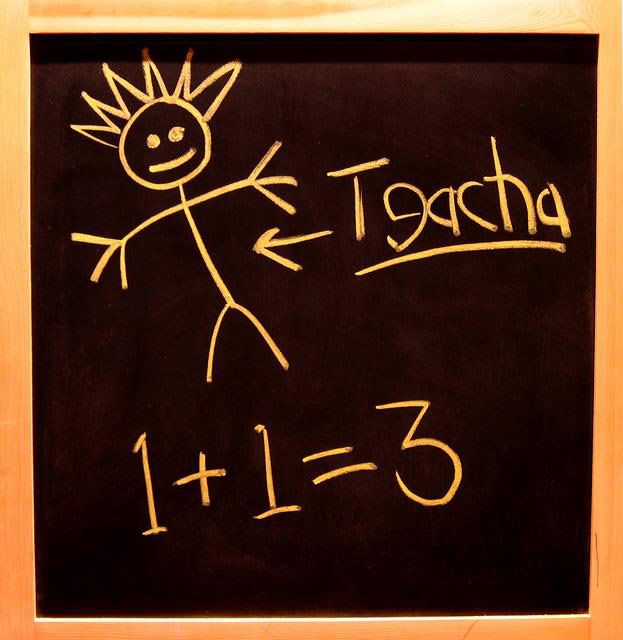
A lot of people dislike math, but neuroscientist Brian Butterworth remembers one young man who went to an unusual extreme to avoid it.
"He was in jail for serial shoplifting, and the reason that he shoplifted, as far as I could tell, was because he was embarrassed to go to the [cashier]," Butterworth explains. "He was afraid that he wouldn't know how much money to give or whether he was getting the right change."
Butterworth is from the University of College London and an expert on dyscalculia, a psychological disorder that makes it nearly impossible to deal with numbers, much less complicated math. Butterworth is also part of a research team that has discovered a part of the brain crucial for counting and performing arithmetic. He thinks the new finding will lead to a better understanding of dyscalculia.
No head for numbers
Dyscalculia is a learning disorder that afflicts about 6 percent of the population. Those afflicted with it have difficulty visualizing number sequences and even the passage of time. Distinguishing between the bigger of two numbers can be difficult. Butterworth says there might be up to three different types, but that a person either has it or they don't.
Using brain scans, the researchers looked at a part of the brain called the intraparietal suclus, or IPS, known to be important for number processing. They demonstrated that the IPS is important for determining how many things are perceived, as opposed to how much of something there is.
These two modes of thought are so similar that until now, scientists have had difficulty distinguishing between them.
Sign up for the Live Science daily newsletter now
Get the world’s most fascinating discoveries delivered straight to your inbox.
"In the past, it was thought that there was no difference between these two types of processing in the brain," said study leader Fulvia Castelli from the California Institute of Technology. "We knew theoretically that there was a difference but nobody had been able to isolate one from the other [in the brain]."
That's because under normal circumstances, our brains activate both modes simultaneously. As an example, Castelli says to think about what happens when you're trying to figure out which checkout line is shortest at the local supermarket.
"You could count the number of shoppers in each line," Castelli said. "But if you're a hurried shopper, you probably take a quick glance at each line and pick the one that seems the shortest."
Both methods can produce the same answer, but one involves specifically counting the number of people in line, while the other uses an estimation approach.
Colored squares
To tease apart these two processes in the brain, the researchers performed an experiment in which they showed subjects a pattern of blue and green squares on a screen. Later, subjects again saw the same pattern, but this time, the lines separating the squares were removed and the colors were blended together.
In both cases, subjects were asked to judge whether they saw more blue or green while activity in the IPS was monitored using brain scans.
In the first case, parts of the IPS were activated, but like in the checkout line example, the subjects might have been counting or they might have been using a glance and estimate approach; there was no way to tell the difference.
During the second phase of the experiment, however, when the colors were blended, the IPS did not light up at all. From this absence of activity, the researchers concluded that the IPS is involved only in counting and not in estimation.
"This is because the brain was no longer able to try to count the objects," Butterworth explained. "Instead it had to assess how much color was in the block and guess whether there was more of one color or another."
Important for arithmetic
So what does all of this have to do with dyscalculia? The researchers think that the brain network involved in counting how many things there are also underlies our ability to perform arithmetic.
"Of course, dyscalculics can learn to count, but where most people can immediately tell that nine is bigger than seven, anyone with dyscalculia may have to count the objects to be sure," Castelli explained.
The team's finding is detailed in the March 13 issue of the journal for the Proceedings of the National Academy of Sciences (PNAS). Butterworth hopes it will lead to a better understanding of the disorder and better treatments.
"Now that we know where to look for the differences in brain activation between those who suffer from dyscalculia and those who don't have the learning disorder, we will be able to come up with better diagnosis and insights," he said.
For those of us who struggle with math but who are not dyscalculic, Butterworth says a math refresher course is probably the best way to improve.
"People with non-dyscalculic maths difficulties are many and varied," he said. "Remedial maths can help most of them, but this would target relevant brain systems only indirectly."
- Like Monkeys, Babies Know Math
- Math Made Easy: Study Reveals 5-year-olds' Innate Ability
- Math and Science Education Not a Major Public Concern
- Math Idol: Voters Pick Greatest Equations












